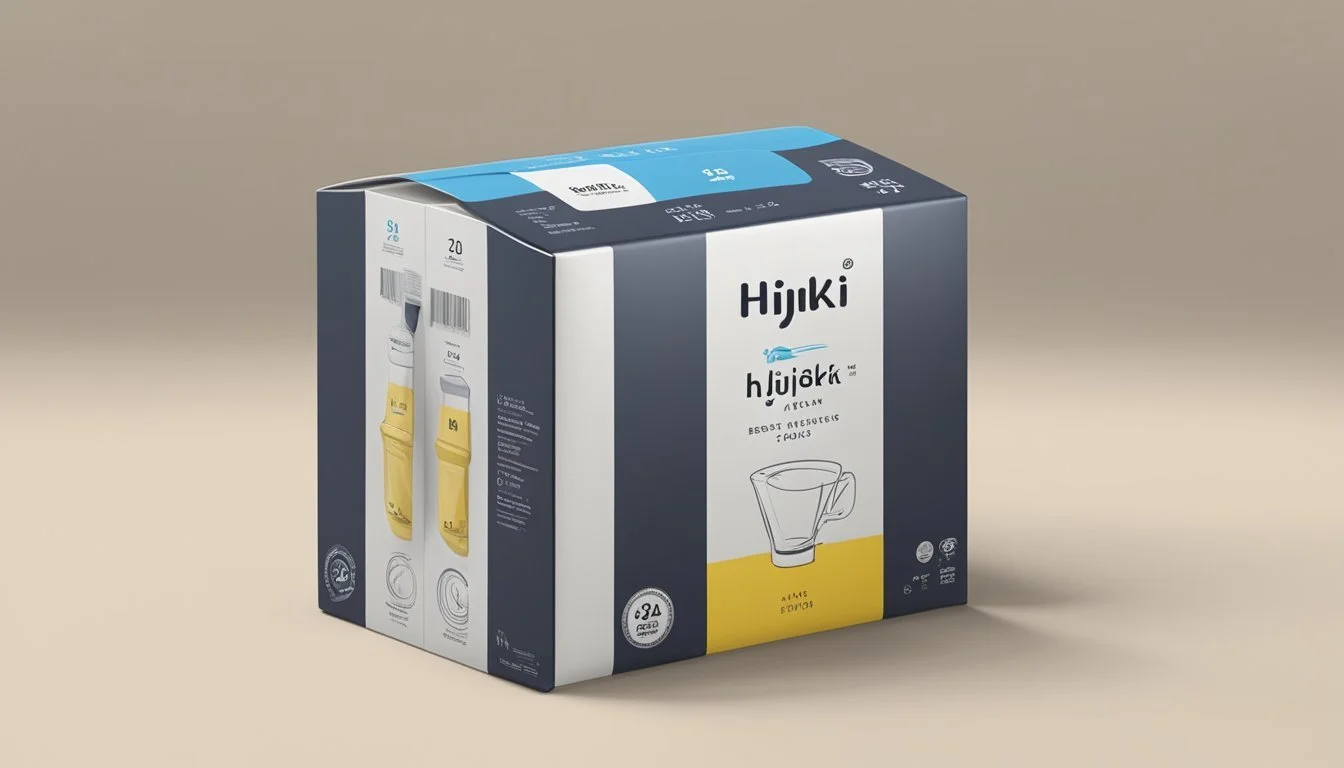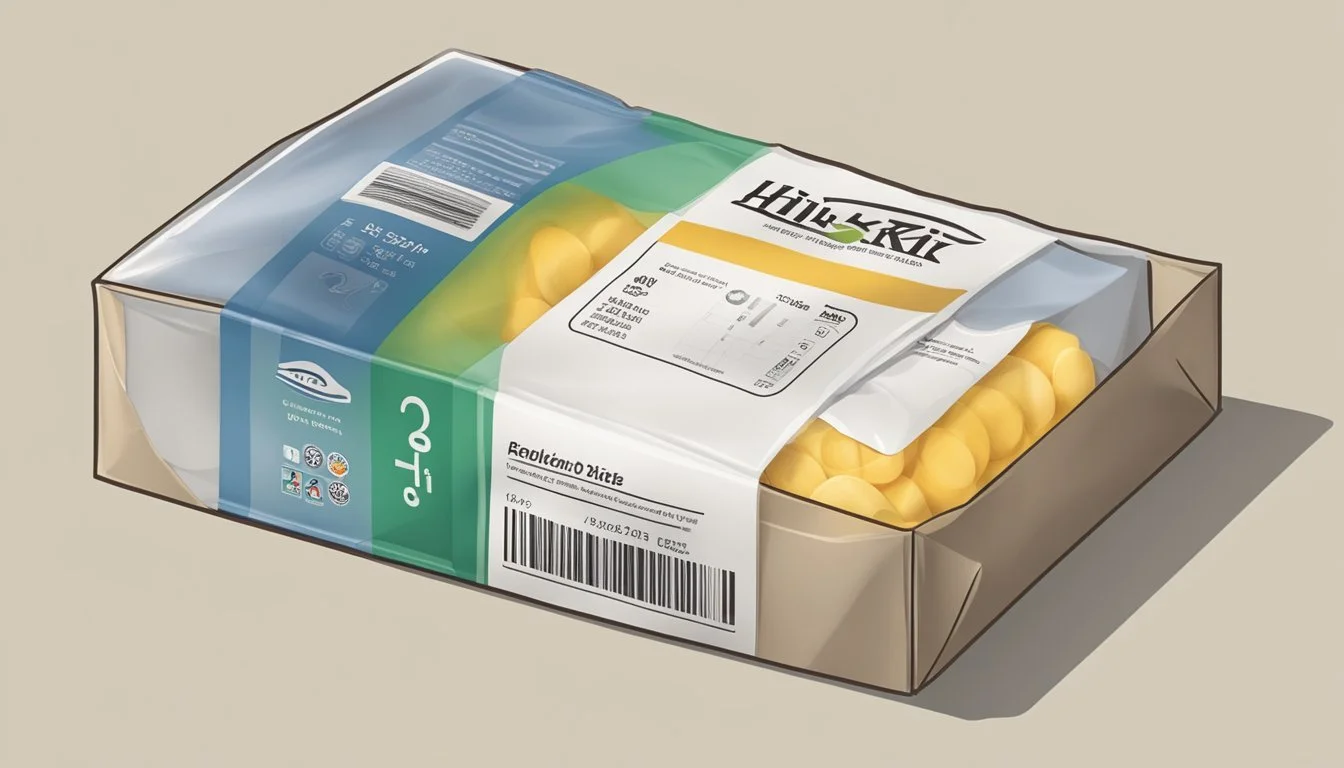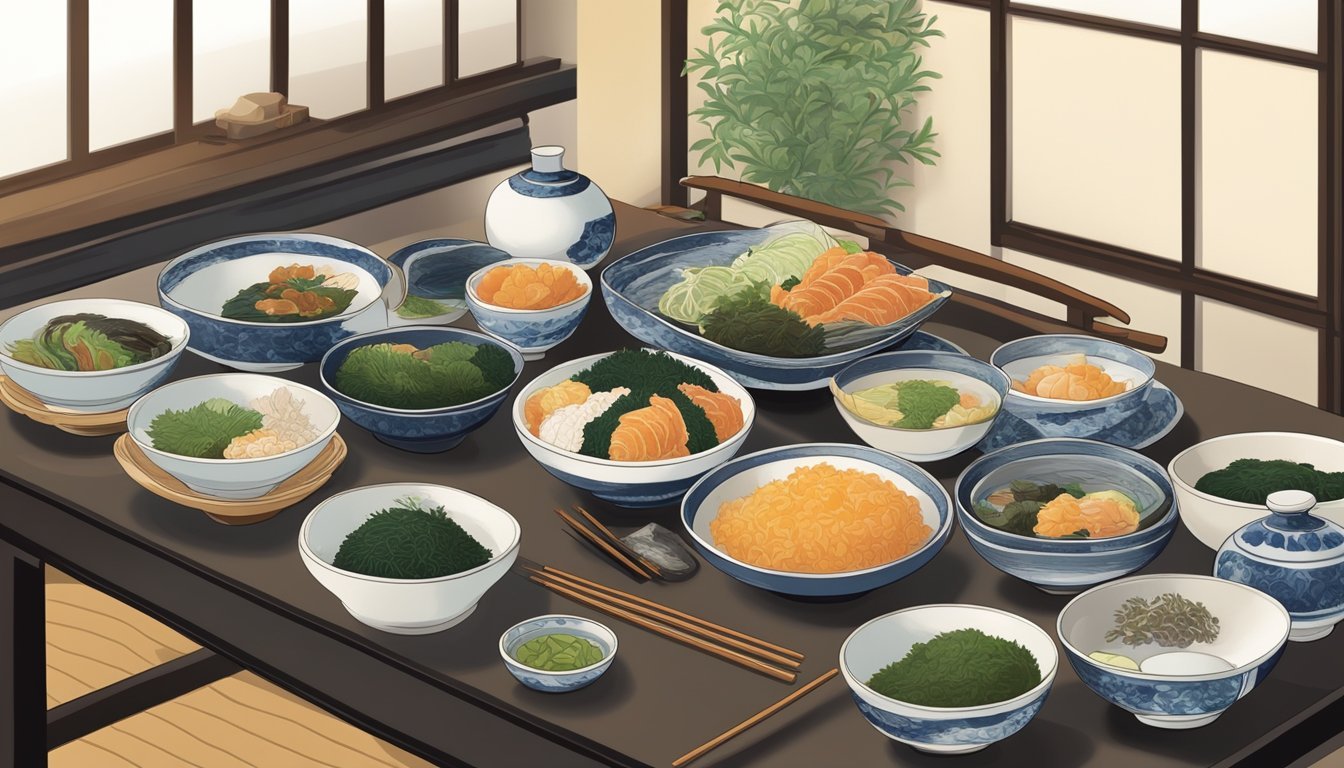How Long Do Hijiki Last?
Shelf Life and Storage Tips
Hijiki is a type of edible seaweed that has been a staple in Japanese cuisine for centuries. Typically found in a dried state, hijiki appears as small, black, twig-like strands. When rehydrated, it expands significantly and takes on a dark brown color. Its longevity, both in dried form and after preparation, makes it a convenient ingredient to store and use in various dishes such as salads, side dishes, and mixed with rice.
When stored properly in a cool, dry place, dried hijiki can last for a considerable amount of time. The absence of moisture is crucial to prevent spoilage and maintain the seaweed’s quality. Once it is rehydrated and prepared in dishes, hijiki's shelf life is reduced, similar to that of other cooked vegetables (how long do cooked vegetables last?). It is recommended to consume prepared hijiki within a few days when kept refrigerated to enjoy its optimal taste and nutritional benefits.
What Is Hijiki?
Hijiki is a traditional Japanese seaweed, renowned for its unique flavor and health benefits, that has been integral to Japanese cooking for centuries.
Origin and Varieties
Originating from the rocky coastlines of Japan, hijiki is a wild seaweed that is particularly popular in East Asian cuisine. There are two main varieties: Nagahijiki, which is long and stringy, and Mehijiki, which is shorter and thicker.
Physical Characteristics
Physically, hijiki is recognized by its black hue and shredded appearance. When dried, it has an earthy and oceany aroma that reflects its marine origin.
Nutritional Profile
Nutritionally, hijiki seaweed is a powerhouse, rich in minerals such as iron, calcium, and magnesium. It's high in fiber and boasts a range of vitamins and essential minerals that contribute to its health benefits.
Culinary Uses
In culinary contexts, hijiki is a versatile ingredient used predominantly in vegan and vegetarian dishes (What wine goes well with vegetarian dishes?). It's not eaten raw but is rehydrated and cooked, often featuring in recipes like Hijiki no Nimono – a savory Japanese side dish.
Preparing Hijiki for Cooking
Preparing hijiki involves a few key steps. Initially, the dried seaweed must be rehydrated through soaking, after which it is rinsed thoroughly. This rehydrates the hijiki, preparing it for cooking.
Common Pairings and Dishes
Hijiki pairs well with ingredients that complement its sweet, yet earthy flavor. Common pairings include carrots, aburaage (fried tofu pouches), konnyaku (yam cake), and lotus root. It's commonly added to dishes like salads, takikomi gohan (seasoned rice), and used as a topping for onigiri (rice balls) or as a mix-in for furikake (seasoned sprinkles for rice).
Health Considerations
When incorporating hijiki seaweed into one's diet, individuals should be aware of certain health considerations. There are benefits to its nutrient content, but attention must be paid to the potential presence of arsenic, the role of its dietary fiber on digestion, and the absorption of valuable minerals.
Arsenic Content and Safety
Inorganic Arsenic: Hijiki seaweed has been found to contain higher levels of inorganic arsenic compared to other seaweeds. International health authorities have flagged inorganic arsenic due to its toxicity and potential health risks.
Organic Arsenic: Despite the presence of arsenic in hijiki, research indicates that a large portion is in the less harmful organic form.
Safety Measures: Consumers should seek guidance from reputable sources regarding the consumption of hijiki and consider moderation in their diet to mitigate arsenic exposure.
Dietary Fiber and Digestion
Benefits of Dietary Fiber: Hijiki is a source of dietary fiber, which supports the digestive system. Fiber aids in maintaining regular bowel movements and can help alleviate common digestive issues.
Digestive Health: The integration of dietary fiber from sources like hijiki could enhance digestive health, preventing conditions such as constipation and bloating.
Mineral Absorption
Calcium and Iron: Hijiki boasts a rich mineral profile, including calcium and iron, which are essential for bone health and blood production.
Magnesium and Potassium: Additionally, it contains magnesium, which supports muscle and nerve function, and potassium, important for maintaining healthy blood pressure.
Absorption Considerations: Although hijiki is mineral-dense, one should consider the potential inhibitory effects of arsenic on the absorption of these minerals. Balance and variety in diet are key for optimal mineral uptake.
Storage and Shelf Life
The proper storage of hijiki is essential for maintaining its quality over time. Whether in dried form or after cooking, following specific storage guidelines can ensure the longevity of this seaweed.
Dried Hijiki Storage
Dried hijiki should be kept in a cool, dry place, preferably in the dried foods aisle of your pantry. It is recommended to store the seaweed in an airtight container to protect it from moisture and preserve its freshness. When stored under these conditions, dried hijiki can last up to one year.
Refrigeration and Freezing Cooked Hijiki
Once hijiki is cooked, its shelf life is significantly reduced. To extend its freshness, cooked hijiki should be refrigerated in a sealed container. It can last in the refrigerator for about one week. If one needs to preserve it for a longer period, freezing is an option. When frozen, cooked hijiki can be kept for up to one month.
Signs of Spoilage
It is important to know when hijiki is no longer suitable for consumption. If dried hijiki has a noticeable change in color, texture, or smell, it may be a sign of spoilage. Similarly, cooked hijiki that has an off odor or visible mold should not be consumed and must be discarded.
Incorporating Hijiki into Meals
Hijiki seaweed, with its savory flavor and distinctive chewy bite, is a versatile ingredient in Japanese cooking that offers a unique umami quality to various dishes.
Traditional Japanese Combinations
The traditional use of hijiki in Japanese cuisine often involves pairing it with julienned carrots, konnyaku (a jelly-like food made from the konjac plant), and lotus root, simmered in a savory dashi broth. This combination can be found in Hijiki Salad, a classic Japanese side dish prized for its blend of textures and flavors. The inclusion of aburaage (fried tofu), edamame (young soybeans), and a seasoning base of soy sauce, mirin, and sake further enhances the dish's appeal. These ingredients come together to create a balanced dish that can complement a bowl of steamed rice or be part of a varied bento box.
Traditional Pairings:
Hijiki with julienned carrots and aburaage
Simmered dishes with konnyaku and lotus root
Seasoned with vegan or traditional dashi, soy sauce, and mirin
Modern Twists and Recipes
Chefs and home cooks alike have incorporated hijiki into modern dishes, infusing contemporary flavors with this traditional sea vegetable. For instance, hijiki can add an umami punch to soba noodles (how long do soba noodles last?). These nutrient-packed sea vegetables are also finding their way into innovative meal prep options, as hijiki's ability to absorb flavors makes it ideal for storing and enjoying throughout the week. A creative recipe might include hijiki mixed with sesame seeds (how long do sesame seeds last?) and sesame oil (how long does sesame oil last?), then tossed with soba noodles for a modern twist on a chilled noodle salad.
Modern Hijiki Ideas:
Hijiki soba noodle salad with sesame dressing
Stir-fried hijiki with various vegetables for a filling meal prep option
Snacks and Quick Bites
For those seeking a quick but flavorful snack, hijiki can be a delightful addition. Combining hijiki with rice and wrapping in seaweed creates an onigiri, a portable and satisfying snack. A simple hijiki seaweed salad can be prepared ahead of time, kept chilled, and served as an appetizing quick bite. When mixed with a light dressing, perhaps with a hint of sugar for balance, hijiki can brighten up a snack spread or serve as an ideal accompaniment to a larger meal.
Snack Suggestions:
Hijiki onigiri, a portable rice snack
Chilled hijiki salad with a light, sweet and savory dressing
Cultural Significance
The cultural significance of hijiki cannot be understated with its deep roots in various Asian culinary traditions, especially within Japan where it is not just a food item but a part of a lasting tradition. It holds a spot in the broader tapestry of Asian seaweeds and plays a significant role in the heritage and daily lives of the people.
Hijiki in Japanese Cuisine
Hijiki (Sargassum fusiforme), known for its black and shredded appearance, is a mainstay in Japanese cooking. A typical aspect of Japanese cuisine is the principle of ichiju sansai, which translates to "one soup, three sides." Hijiki often finds its way into one of these side dishes, adding nutritional value and texture. One of the most popular hijiki-based dishes is takikomi gohan, where it is mixed with rice and other ingredients. It's prized not only for its taste but also for its purported health benefits, such as enhancing hair quality.
Regional Variations: In Japan, nagahijiki, a longer version of hijiki, is also consumed.
Availability: Hijiki has become readily available outside Japan, particularly in Asian supermarkets worldwide.
Hijiki Across Asia
While hijiki is predominantly linked to Japanese food (What wine goes well with Japanese food?) culture, its presence can be felt in other parts of Asia as well. In Korea, hijiki is used in a variety of dishes, ranging from seasoned salads to being a component of mixed rice. Korean cuisine often includes hijiki in its seasoned and many side-dish variations. It's not unusual for it to be served as tot bap (rice with hijiki) or tot-muchim (seasoned hijiki).
In China, along the coastal regions where hijiki is native, it is included in various regional dishes, manifesting the rich seaweed heritage of Asian shorelines.
Cross-Cultural Presence: Hijiki's popularity in Asian supermarkets signifies its integration into the culinary practices of various Asian communities.
Purchasing and Finding Hijiki
When looking to include hijiki in one's diet, it's important to know where to find it and how to identify a good quality product. This sea vegetable is traditionally used in Japanese cuisine and can be found in various stores.
Selecting Quality Hijiki
One should look for dried hijiki seaweed which typically appears black and shredded. A high-quality hijiki is free from excessive dust and has a uniform color without any signs of bleaching or discoloration. The aroma should be ocean-like, suggestive of its natural origin as wild seaweed. It is essential to inspect the packaging for any signs of moisture or damage, which can cause the hijiki to spoil.
Shopping Tips
To purchase hijiki, seekers can explore Asian supermarkets or natural food stores where it is commonly available. They can expect to find it sold in dried form, which greatly expands upon rehydration. A small amount of dried hijiki will yield much more once soaked and prepared.
Asian Markets: Wide selection of hijiki, often imported directly from Japan.
Natural Food Stores: May offer organic options or sustainably harvested varieties.
It's always advisable to check the origin and harvesting practices on the label to ensure the product's quality and sustainability. Buyers should also be aware that they might come across different grades and cuts of hijiki, with each suitable for a variety of culinary uses.
Preparation and Cooking Techniques
To ensure quality and flavor, it is essential to follow proper techniques for rehydrating and cooking hijiki seaweed. These procedures will optimize the texture and taste, allowing the hijiki to complement a variety of dishes with its earthy, mushroom-like quality.
Tips for Rehydrating Hijiki
Soaking: Begin by rehydrating dried hijiki to restore its natural volume and texture. Soak the seaweed in cold water for 30 minutes at room temperature. The hijiki will expand significantly, often doubling or tripling in size.
Rinsing: After soaking, drain the hijiki thoroughly and rinse it under running water to remove any grit or excess salt.
Cooking with Hijiki
Simmering Technique: Hijiki is commonly used in simmered dishes. Once rehydrated, hijiki is simmered for 15 minutes to infuse flavors from accompanying ingredients.
Miso Soup: Incorporating hijiki into miso soup adds an umami richness. Ensure to add the hijiki at the right time to maintain its desired texture.
Accompanying Flavors and Ingredients
Savory Elements: Enhance hijiki's savory profile with soy sauce, mirin, and a hint of sweetness to balance the flavors. These ingredients are particularly important in dishes like Hijiki Salad.
Vegetables and Legumes: Combine hijiki with julienned carrots, edamame beans, or bamboo shoots for a mix of textures and an earthy taste. Sesame seeds can be sprinkled atop for an extra dimension to the dish.
By following these precise preparation and cooking techniques, hijiki will deliver its distinctive earthy and savory taste, along with a mushroom-like quality, to a variety of both sweet and savory dishes.
Conclusion
When storing hijiki seaweed, it's important to consider its shelf life for optimal freshness and nutritional quality. Dried hijiki can last a significant amount of time when stored properly.
Proper storage involves:
Keeping it in an airtight container
Placing it in a cool, dark, and dry environment
Following these steps helps to maintain its quality and extends its usability. Consumers should be mindful of the use-by date provided on packaging, which can guide them on the expected shelf life.
Typically, dried hijiki seaweed shelf life is as follows:
Unopened: Up to 6 months from the date of packaging
Opened: Approximately 1-3 months, depending on storage conditions
Should there be any noticeable changes in color, texture, or smell, this may indicate the product has surpassed its optimal consumption period. Additionally, while hijiki is nutritious, it should be noted that consuming it in moderate amounts is advisable due to its potential arsenic content.
In summary, with correct storage, hijiki seaweed can be a lasting addition to one's pantry, offering a distinctive flavor and nutrient profile to various dishes. Consumers are encouraged to follow storage guidelines and heed food safety warnings for a safe and enjoyable experience with this seaweed.









